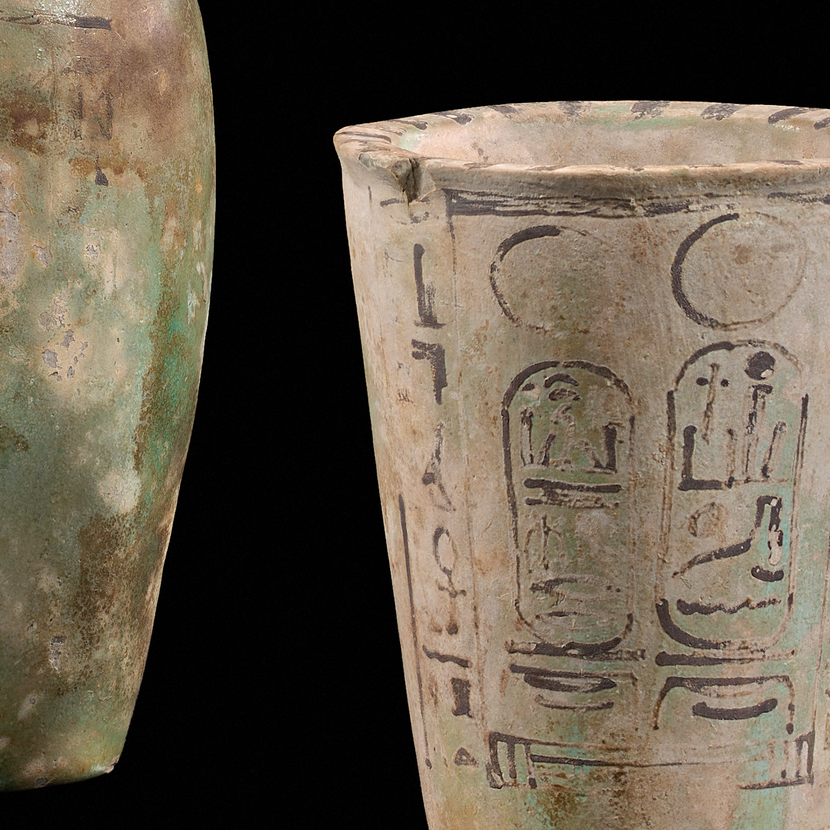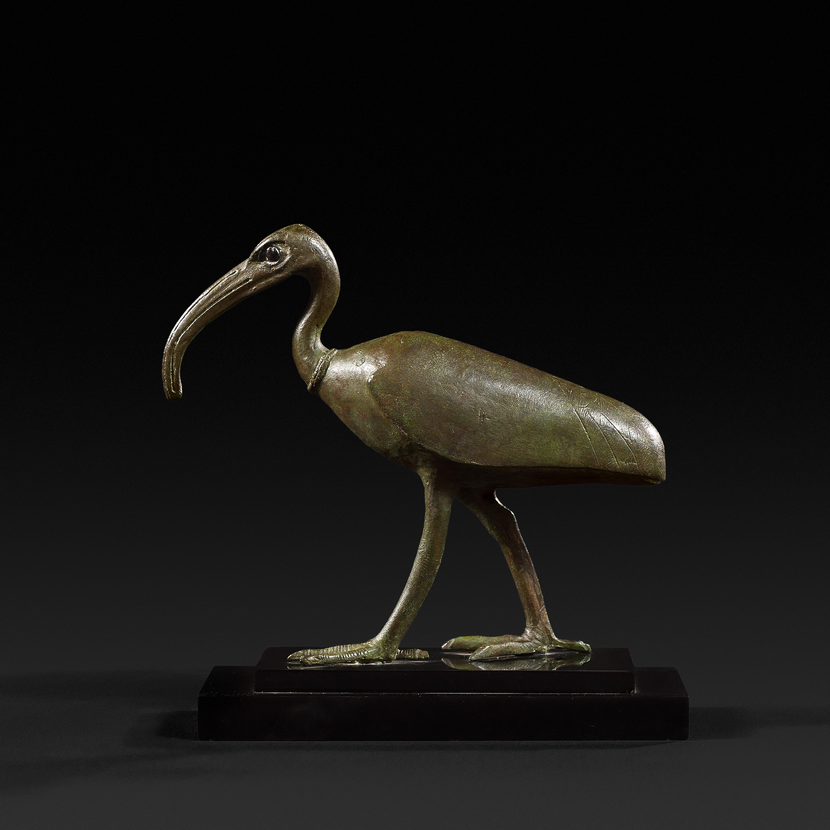Upper part of a sarcophagus
Upper part of a sarcophagus lid with the remaining left side of an elaborate tripartite wig.
Egypt
New Kingdom , XVIII-XXI Dynasty, 1570-1070 BC
Wood with original gesso and polychromy
Height 66 cm ( 26 in )
Width 24 cm ( 9 1⁄2 in )
Former private collection England, by descent until June 2008; private collection Dr. M.-L. Berlin, Germany
O. Koefoed-Petersen: Catalogue des sarcophages et cerceuils égyptiennes, Copenhague 1951
A. Küffer: Die Bedeutung des Sarges, Suiss Coffin Project, Zürich 2012
K.M. Cooney: Coffins, Cartonnage, and Sarcophagi, John Wiley & Sons, Oxford 2015
Upper part of a sarcophagus lid with the remaining left side of a tripartite wig. The yellow painted face has large and prominent eyes beneath black ar- ched eyebrows. The nose and lips are small and not underlined to give the eyes a stronger presence. The finely detailed wing of a falcon-headed vulture headdress covers the blue and yellow striped wig ending in a large finely detailed floral border.
Below the heart-pendant worn around the neck, a black Inpw (Anubis as a jackal – ‘he who is above the secrets’ ), rests upon a column of inscription: ‘ji n(y)-sw.t [htp]... – May the king give [a boon]...’ .
Hardly any other nation in human history has dealt as extensively with the afterlife and, as a result, arranged such elaborate burials as the ancient Egyptians. According to their beliefs, human existence is not ended by death, which is considered a part of the created world order. Instead, death is seen as a threshold to a new, eternal form of existence.
The coffin had two important functions: on the one hand, to protect the embalmed body from decay, which was a crucial prerequisite for the individual's continued existence in the afterlife; on the other hand, its shape, iconography, and inscriptions carried different religious meanings in various periods.
After the abandonment of decorated individual tombs in the last millennium of ancient Egyptian culture, the anthropomorphic coffin took on an additional function, replacing the indispensable images and texts that had previously adorned tomb walls. These compressed image-text compositions - containing spells from the centuries-old funerary literature - were intended to unleash their magical power in the afterlife and help the deceased attain a pleasant existence in the "Fields of Eternity." A multitude of deities watched over the integrity of the deceased.






